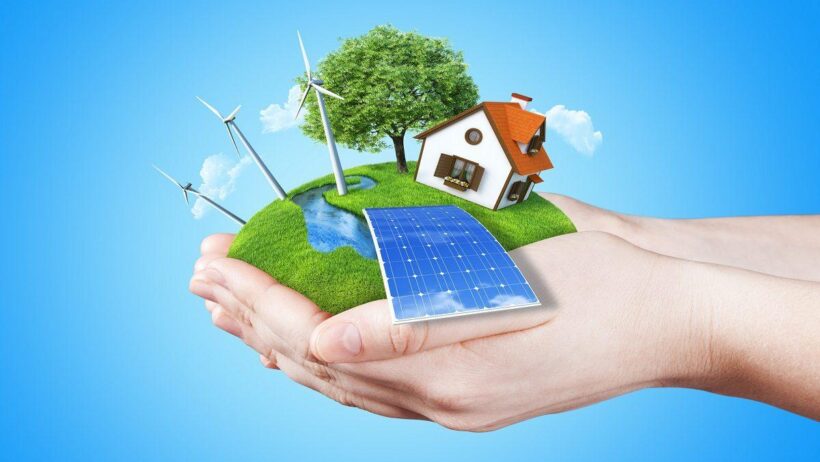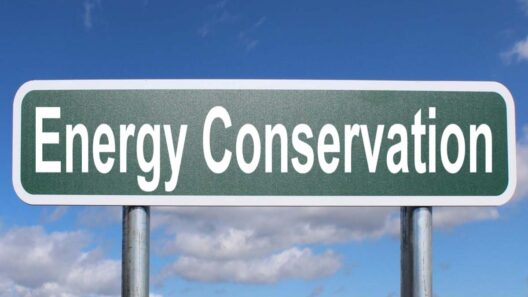Energy conservation is an essential component of sustainable living. By understanding and implementing energy-saving methods, individuals can play a significant role in mitigating climate change, reducing their carbon footprint, and promoting a healthier environment. This article will explore the multifaceted approach to applying energy conservation in real life and provide actionable insights to help readers make informed decisions.
Understanding Energy Conservation
At its core, energy conservation refers to the practice of reducing energy use through various means, which may involve technological innovations or behavioral changes. The significance of energy conservation cannot be understated; it is pivotal in decreasing greenhouse gas emissions and decreasing reliance on fossil fuels. In today’s world, where the looming threat of climate change continues to escalate, adopting energy-efficient practices has never been more crucial.
Types of Energy Conservation
There are several domains in which energy conservation can be applied. These can be categorized into three primary sectors: residential, commercial, and industrial. Each sector presents distinct challenges and opportunities for energy savings.
- Residential Energy Conservation: Homeowners can implement numerous strategies to enhance energy efficiency. Simple measures, such as using energy-efficient appliances, installing programmable thermostats, and sealing gaps in windows and doors, can lead to substantial reductions in energy consumption. More significant investments, such as retrofitting homes with insulation or investing in renewable energy sources like solar panels, can yield long-term benefits.
- Commercial Energy Conservation: Businesses can benefit immensely from adopting energy-efficient practices. Conducting energy audits to identify wastage, utilizing LED lighting, and employing energy management systems can optimize operational efficiency. Additionally, fostering a culture of energy awareness among employees can reinforce conservation efforts and promote sustainable practices within the workplace.
- Industrial Energy Conservation: The industrial sector is often the largest consumer of energy. Implementing advanced technologies such as combined heat and power (CHP) systems, utilizing energy recovery systems, and optimizing manufacturing processes can significantly reduce energy usage. Furthermore, industries can collaborate with governmental bodies to achieve regulatory compliance and leverage incentives for adopting sustainable practices.
Behavioral Changes and Energy Conservation
Energy conservation extends beyond technical solutions; behavioral changes are equally essential. Individuals can contribute to energy savings by adopting specific habits in their daily lives. Simple practices such as turning off appliances when not in use, using energy-efficient transportation methods, or being mindful of energy consumption during peak hours can foster a culture of conservation.
Furthermore, awareness campaigns and educational outreach can enlighten communities about the significance of energy conservation. Schools, community organizations, and social media platforms can be instrumental in disseminating information and motivating individuals to make conscious choices regarding energy use.
Technological Innovations in Energy Conservation
The advent of technology has revolutionized the landscape of energy conservation. Smart home devices have made it easier for individuals to monitor and control their energy use effectively. Smart thermostats, energy monitoring systems, and automated lighting controls help households customize their energy consumption behaviors, optimizing efficiency based on real-time usage data.
Moreover, advancements in renewable energy technologies, such as solar and wind, are making significant strides toward decentralizing energy distribution. This transition not only promotes energy independence but also reduces reliance on conventional energy sources, fostering a more sustainable environment.
Policies and Incentives Supporting Energy Conservation
Governmental policies play a crucial role in fostering energy conservation at various levels. Incentives such as tax credits, rebates, or grants encourage individuals and businesses to invest in energy-efficient products and technologies. Furthermore, regulations mandating energy efficiency standards in buildings and appliances are vital in pushing for widespread adoption of conservation practices.
Agreements at international levels, such as the Paris Climate Accord, further emphasize the need for countries to commit to reducing greenhouse gas emissions through tangible actions, including energy conservation. Advocacy and lobbying for progressive energy policies can lead to substantive changes in how energy is consumed and produced globally.
The Economic Impact of Energy Conservation
Engaging in energy conservation not only benefits the environment but also offers economic advantages. Reduced energy consumption translates directly into lower utility bills for households and businesses alike. Additionally, investments in energy-efficient technologies and infrastructure can stimulate job creation within the clean energy sector, driving economic growth while promoting sustainability.
Furthermore, by addressing energy inefficiencies, organizations can reduce operational costs, enhancing their competitive advantage. The understanding that sustainability and profitability can coexist is pivotal in persuading stakeholders across various sectors to prioritize energy conservation.
The Role of Communities in Energy Conservation
Communities can serve as powerful catalysts for change in energy conservation efforts. Collaborative initiatives such as community solar projects, energy cooperatives, and local conservation programs foster collective action towards sustainable energy use. These initiatives empower individuals to take part in broader environmental stewardship while cultivating a sense of community responsibility.
Local governments and organizations can sponsor events and workshops aimed at educating the public on energy conservation practices, thereby deepening community engagement. Investing in community capacity-building efforts ensures that sustainability becomes a shared goal.
Conclusion
Applying energy conservation in real life is a multifaceted endeavor that encompasses technological innovation, behavioral change, policy formulation, and community engagement. As the challenges of climate change continue to unfold, the urgent need to adopt energy-saving measures becomes increasingly apparent. By embracing energy conservation practices, individuals and organizations not only contribute to a healthier planet but also create a sustainable future for generations to come.








